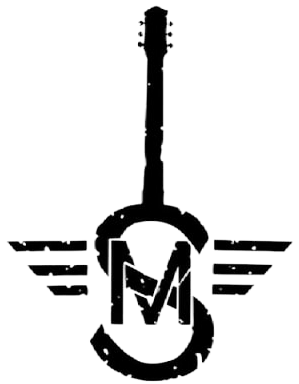What is microvascular decompression of the trigeminal nerve?
What is it? Microvascular Decompression is a surgical procedure to relieve the symptoms (pain, muscle twitching) caused by compression of a nerve by an artery or vein. It provides the longest duration of relief from trigeminal neuralgia pain, and the lowest rate of permanent numbness of the face after surgery.
What is microvascular decompression surgery?
Microvascular decompression is a surgical procedure for treating intensely painful or spasming facial nerves when medications haven’t brought relief. We provide this option for patients who have trigeminal neuralgia, glossopharyngeal neuralgia or hemifacial spasm.
Is microvascular decompression surgery considered brain surgery?
MVD requires the use of general anesthesia. In addition, because it is also brain surgery, those with other medical conditions or who are in generally poor health may not be candidates.
What is the code for trigeminal neuralgia?
ICD-10 code G50. 0 for Trigeminal neuralgia is a medical classification as listed by WHO under the range – Diseases of the nervous system .
Does microvascular decompression cure trigeminal neuralgia?
What are the results? MVD is highly successful in treating trigeminal neuralgia (95% effective) with a relatively low risk of pain recurrence (20% within 10 years). The major benefit of MVD is that it causes little or no facial numbness compared to percutaneous stereotactic rhizotomy (PSR).
How long does it take for the trigeminal nerve to recover after microvascular decompression?
Including your hospitalization, your microvascular decompression recovery time may span between two and four weeks with gradual progress made along the way.
What is the surgery called for trigeminal neuralgia?
Microvascular decompression (MVD), also known as the Jannetta procedure, is the most common surgical procedure for the treatment of trigeminal neuralgia.
What is the ICD-10 code for post herpetic neuralgia?
22.
What is the ICD-10 code for facial neuralgia?
G50. 0 – Trigeminal neuralgia | ICD-10-CM.
Who performs microvascular decompression?
MVD is a microsurgical procedure, meaning the neurosurgeon uses an operating microscope and fine instruments to operate on the delicate blood vessels and nerves. Cranial nerves are 12 pairs of nerves that provide communication between the brain and the face, head and neck.
Can trigeminal neuralgia come back after MVD surgery?
Recurrence may occur in 18–30% of patients, mainly within 2 years of surgery and thereafter at a rate of 2–5% per year [4,14].
Can shingles cause trigeminal neuralgia?
Varicella zoster virus can infect the trigeminal ganglion, but viral infection is not frequently considered as a cause of trigeminal neuralgia.
What is Postherpetic trigeminal neuralgia?
Postherpetic neuralgia (post-hur-PET-ik noo-RAL-juh) is the most common complication of shingles. The condition affects nerve fibers and skin, causing burning pain that lasts long after the rash and blisters of shingles disappear.
What is the ICD-10 code for shingles pain?
9.
What is the ICD-10 code for shingles?
ICD-10 code B02 for Zoster [herpes zoster] is a medical classification as listed by WHO under the range – Certain infectious and parasitic diseases .
Is trigeminal neuralgia surgery considered brain surgery?
Trigeminal neuralgia surgery is not a brain surgery as it does not affect the brain. Microvascular decompression surgery involves making an opening in the skull and the membrane (dura) covering the brain, to access the trigeminal nerve. The brain itself is untouched during the surgery.
What is the newest treatment for trigeminal neuralgia?
Stereotactic radiosurgery is a fairly new treatment that uses a concentrated beam of radiation to deliberately damage the trigeminal nerve where it enters the brainstem. Stereotactic radiosurgery does not require a general anaesthetic and no cuts (incisions) are made in your cheek.
Which nerves are most commonly affected in shingles?
Among cranial nerves, the trigeminal and facial nerves are the most affected due to reactivation of HZV latent in gasserian and geniculated ganglia. The 1st division of the trigeminal nerve is commonly affected, whereas the 2nd and the 3rd are rarely involved.
Is nerve damage from shingles permanent?
Around one in five people with shingles will get post-herpetic neuralgia. People age 50 and over are particularly at risk. Many people with post-herpetic neuralgia make a full recovery within a year. But symptoms occasionally last for several years or may be permanent.
Is there a connection between shingles and trigeminal neuralgia?
Trigeminal neuropathy develops in 16–20% of patients with shingles, more often in women and in persons aged 50–70 years [2, 3].
Can shingles damage the trigeminal nerve?
Trigeminal Nerve Block – In rare cases, shingles (and subsequently PHN) can occur on the face due to the spread of the virus along the Trigeminal Nerve. This procedure involves injecting a small amount of local anesthetic onto the affected branch of the Trigeminal Nerve to interrupt the chronic pain cycle.
What is the ICD 10 code for post herpetic neuralgia?
What is ICD 10 code for varicella-zoster?
ICD-10-CM Code for Varicella [chickenpox] B01.
What is the most common treatment for trigeminal neuralgia?
The anti-convulsant drug most commonly prescribed for trigeminal neuralgia is carbamazepine (Tegretol), which can provide at least partial pain relief for up to 80 to 90 percent of patients. Other anti-convulsants prescribed frequently for trigeminal neuralgia include: Phenytoin (Dilantin) Gabapentin (Neurontin)
What is the most common cause of trigeminal neuralgia?
Evidence suggests that in up to 95% of cases, trigeminal neuralgia is caused by pressure on the trigeminal nerve close to where it enters the brain stem, the lowest part of the brain that merges with the spinal cord. This type of trigeminal neuralgia is known as primary trigeminal neuralgia.
